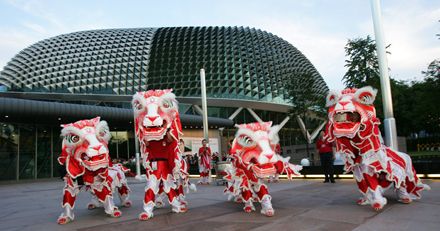The depth of the Singapore-dollar-bond market’s growth was amplified last year when a record number of Hong Kong-based borrowers went south to tap a record volume of issues. The trend is continuing this year with a flurry of issues.
Five Hong Kong borrowers raised a combined S$2.6bn (US$2.06bn) in 11 tranches for the whole of 2011, according to Thomson Reuters data. That is a whopping rise from just S$375m that Hong Kong borrowers raised in 2010. The previous high was S$1.07bn back in 2006, just before the US sub-prime scandal triggered the global financial crisis.
In the first two months of 2012 alone, Hong Kong issuers have raised S$660m in Singapore, even as a horde of borrowers from the SAR tapped the hot US-dollar market.
What the statistics illustrate is that the Singapore debt market has grown to be more than just a place for opportunistic forays. Instead, the market has become entrenched as a long-term viable and reliable avenue for the often-savvy and sophisticated Hong Kong borrowers.
“Hong Kong borrowers continue to flow into Singapore, the interest is still there and we will see more such issuers emerging in the local bond market,” said Clifford Lee, managing director of debt capital markets at DBS Bank, which has cornered much of the business. “As long as the basis swaps work in their favour, the foreign issuers will come.”
Competitive funding and substantial savings were key attractions for the Hong Kong borrowers when they came to the local market last year. It was the Cheung Kong’s senior perpetual issue that drove home the message that in significant savings could be had. The Singapore dollar senior perps, the first of its kind in Asia, priced at 5.125% at a time when global funds were fleeing in search of safe havens. If Cheung Kong had tapped the US dollar market, investors would have demanded a yield in the mid-7% region.
Bankers estimate that, if they raise funds in Singapore, Hong Kong borrowers still can achieve annual savings of 20bp–30bp on average, an amount not to be sniffed at when raising US$200m and above.
The competitive funding is due to the relatively stable basis swaps and the extremely low benchmark rates in Singapore. When Cheung Kong sold the perps last August, the five-year swap offered rates – used as benchmarks in the country – were only 1.01%. On March 6, the five-year was still quoted at 1.13%.
The Singapore market is also flushed with liquidity. This was a point not lost on Nomura because it noted that the liquidity for Singapore-dollar denominated bonds had improved this year not only among local investors, but also foreign-based investors, which also benefited from an appreciating currency.
“The market has heaps of money,” said a Singapore-based foreign banker. “Total Sing-dollar deposits as at the end of last year came to about S$480bn, which reflected an increase of S$50bn from the year before. However, the local bond market only expanded by S$2bn. So, investors have hoards of funds to put to work and they are after yields.”
Such liquidity, particularly from the private banks, has driven corporate issuance year to date sharply higher to S$4.1bn, which includes the largest single-tranche perp of S$1.8bn from Genting sold on March 1. Nomura said this compared to S$10.2bn sold in all of 2011, noting that the market “offers yields/spreads that are comparable in US dollars for straight bonds, and tighter spreads for perpetuals”.
Lee echoed the sentiment: “Singapore, at this juncture, can provide some borrowers with cheaper funding and, for others, the longer the tenor the greater the advantage.”
This partly explains why perpetual issues are the rage all over Singapore. The last two weeks have seen three Singapore companies – Olam, Singapore Post and Genting Singapore – sell a combined S$2.425bn of perps, with Genting’s junior perp alone worth S$1.8bn. So far, of the Hong Kong borrowers, only Cheung Kong has gone the perp route, but Lower Tier 2 structures are also a big draw.
Standard Chartered Hong Kong sold a successful S$750m 10-year non-call five bond – a so-called “old-style” subordinated debt – last October at 4.15%. This year saw Dah Sing Bank make its debut in Singapore with a S$225m LT2 bond at 3.65%.
Both deals drew strong books, a fact that has now brought the Bank of East Asia to launch its own maiden LT2 paper in the market. The borrower set a guidance of 4.5% on a slightly extended tenor of 10.5-year non-call 5.5 on March 6.
The strong liquidity has also helped hold up secondary performances, in contrast to the rocky showings in the US dollar market. Henderson Land’s 4% 2018 bonds, for instance, were trading at an equivalent 4.9% after swaps in early March, which was 80bp below the company’s US dollar notes due 2017.
While Hong Kong borrowers have bolstered Singapore’s reputation as a viable funding centre in Asia, the broad success of Genting’s perp in the region has demonstrated the staying and growing power of the local currency markets, which will come in timely to fill the vacuum that the retreating European banks have created.
To view the digital version of this report, please click here.

